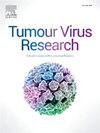Opportunities to advance cervical cancer prevention and care
IF 8.1
Q1 VIROLOGY
引用次数: 0
Abstract
Cervical cancer (CaCx) is a major public health issue, with over 600,000 women diagnosed annually. CaCx kills someone every 90 s, mostly in low- and middle-income countries. There are effective yet imperfect mechanisms to prevent CaCx. Since human papillomavirus (HPV) infections cause most CaCx, they can be prevented by vaccination. Screening methodologies can identify premalignant lesions and allow interventions before a CaCx develops. However, these tools are less feasible in resource-poor environments. Additionally, current screening modalities cannot triage lesions based on their relative risk of progression, which results in overtreatment. CaCx care relies heavily on genotoxic agents that cause severe side effects. This review discusses ways that recent technological advancements could be leveraged to improve CaCx care and prevention.
推进宫颈癌预防和护理的机遇
宫颈癌(CaCx)是一个重大的公共卫生问题,每年有 60 多万妇女确诊患上宫颈癌。每 90 秒就有一人死于宫颈癌,主要发生在中低收入国家。目前已有有效但不完善的机制来预防 CaCx。由于人类乳头瘤病毒(HPV)感染是大多数 CaCx 的病因,因此可以通过接种疫苗来预防。筛查方法可以发现癌前病变,并在 CaCx 发生之前进行干预。然而,在资源匮乏的环境中,这些工具的可行性较低。此外,目前的筛查方法无法根据病变发展的相对风险对病变进行分流,从而导致过度治疗。CaCx治疗严重依赖会产生严重副作用的基因毒性药物。本综述将讨论如何利用最新的技术进步来改善 CaCx 的治疗和预防。
本文章由计算机程序翻译,如有差异,请以英文原文为准。
求助全文
约1分钟内获得全文
求助全文
来源期刊

Tumour Virus Research
Medicine-Infectious Diseases
CiteScore
6.50
自引率
2.30%
发文量
16
审稿时长
56 days
 求助内容:
求助内容: 应助结果提醒方式:
应助结果提醒方式:


